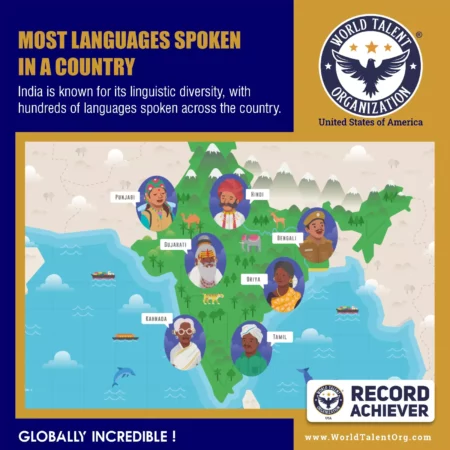
Language Feast: How India Redefines Unity in Diversity Through LanguagesIndia, a land of diverse cultures and traditions, is celebrated for its rich tapestry of languages. With over 22 officially recognized languages and more than 1,600 dialects, India stands as a testament to the incredible linguistic diversity that exists within its borders. This article explores how India’s linguistic landscape not only reflects its unity in diversity but also serves as a bridge between communities, fostering understanding, and promoting cultural harmony.
The Towering Pillars of Unity
1. Constitutional Recognition of Languages
India’s Constitution recognizes 22 languages under the Eighth Schedule, granting them official status. This inclusive approach empowers different linguistic communities, ensuring their languages are preserved and promoted.
2. Cultural Mosaic Preserved in Words
Each language is a repository of cultural heritage, encapsulating stories, myths, and traditions passed down through generations. These languages safeguard India’s history and way of life.
3. Linguistic Diversity in Education
States have the autonomy to determine the medium of instruction in schools. This linguistic flexibility allows students to learn in their mother tongue, facilitating better understanding and retention of knowledge.
4. Languages as Identity
Languages are more than just communication tools; they are markers of identity. They connect individuals with their roots and foster a sense of belonging, reinforcing the unity among diverse communities.
The Linguistic Bridge
1. Interconnecting Communities
India’s linguistic diversity serves as a bridge that connects people from different regions. It enables cross-cultural interactions and allows citizens to appreciate the nuances of various languages.
2. Cultural Exchange and Tolerance
Exposure to different languages encourages tolerance and respect for other cultures. This linguistic interaction dismantles stereotypes and fosters a society built on acceptance and harmony.
3. Economic Opportunities
Multilingualism opens doors to economic opportunities. India’s diverse linguistic landscape facilitates trade and commerce across regions, strengthening the nation’s economy.
Nurturing Unity in Diversity
1. Language Policies
India’s government implements language policies to promote linguistic harmony. National events and programs celebrate the beauty of various languages, encouraging citizens to embrace their heritage.
2. Bilingualism and Multilingualism
Many Indians are proficient in more than one language. Bilingualism and multilingualism are common, emphasizing the importance of language as a tool for connection.
3. Language as a Soft Power
India’s linguistic diversity enhances its global influence. Language is a soft power that draws international attention and fosters diplomatic relations.
Challenges and Future Outlook
1. Language Endangerment
While many languages thrive, some face the threat of extinction. Efforts are needed to preserve endangered languages and the knowledge they hold.
2. Digital Divide
The digital era poses challenges in preserving languages. Efforts are needed to make digital content available in multiple languages, bridging the digital divide.
Conclusion
In the grand symphony of India’s cultural landscape, languages play a melodious role that binds its people together. These languages are not just means of communication; they are instruments of unity, carriers of tradition, and bridges to understanding. India’s linguistic diversity sets an example for the world, showing how a nation can celebrate its differences while remaining united. It’s a language feast that nourishes the soul and enriches the spirit.
How many languages are recognized in India's Constitution?
India’s Constitution recognizes 22 languages under the Eighth Schedule.
How does linguistic diversity benefit India's economy?
Linguistic diversity opens economic opportunities by facilitating trade and commerce across regions.
Do Indians commonly speak more than one language?
Yes, many Indians are proficient in more than one language, promoting cross-cultural interactions.
What challenges does India's linguistic diversity face?
Some languages are endangered, and there’s a need to preserve them. Also, the digital divide poses challenges for language preservation.

